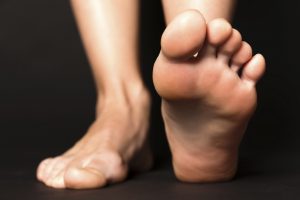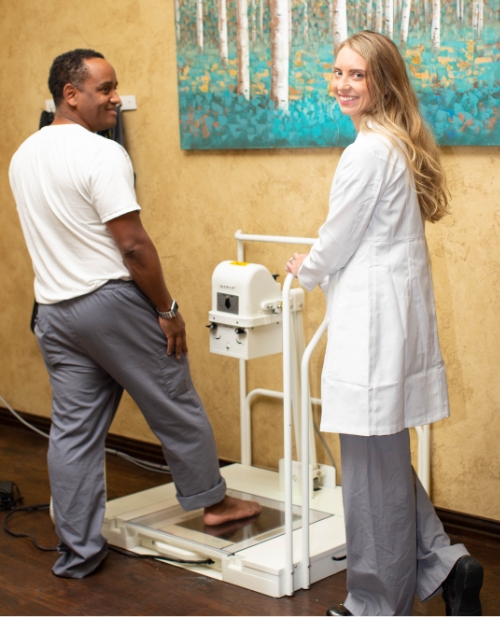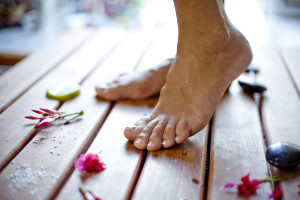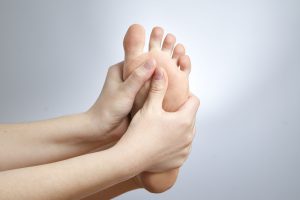Medically Reviewed by Dr. Rachel N. Verville
November 26, 2018

Athletes, particularly runners, face a heightened risk for plantar fasciitis. This condition can lead to intense discomfort in your foot, especially in the morning, and make it challenging to get around. While most people regain mobility after a few minutes of being up and about, you may wonder about some of the long-term effects of plantar fasciitis. For example, can this condition weaken your ankles, eventually leading to other ambulatory problems?
The short answer is that there is a very real connection between plantar fasciitis and ankle pain, mostly because people with this condition usually need to modify their walking and running motions. We invite you to dive deeper into the link between plantar fasciitis and ankle discomfort.
What Is the Connection Between Plantar Fasciitis and the Ankle?
The plantar fascia is a fibrous tissue in the foot that connects the toes to the heel bone. When this tissue is stretched out too much or subjected to increased tension, it can make the entire foot feel discomfort, including the ankle.
The more you walk or run, the more the tension increases. Your body will naturally adapt, making subtle changes to your walking or running motion. However, these adaptations can ultimately cause more extensive issues with your ankle, often requiring podiatrist intervention.
More specifically, plantar fasciitis often results in a slight limp or subtle changes to how you take a step. These changes lead to uneven pressure on the feet and then uneven strain on the ankles. The longer this uneven pressure is applied, the greater the chance of ankle discomfort developing.
How To Relieve Discomfort from Plantar Fasciitis
If you experience ankle pain due to plantar fasciitis, there are a few options you can consider for pain relief.
- Do some stretches. Stretch out the arches of your feet in the morning, then pause to do so a few times throughout the day. This action can lead to short-term pain relief and long-term healing.
- Massage your feet. Decrease the pressure on your feet by gently applying a massage ball or roller without too much force. Remember that the point is to relieve pressure, not add more.
- Allow your feet and ankles to rest. Downtime can be tough if you have a job that forces you to be on your feet all day. However, giving your feet and ankles plenty of rest can expedite healing and relieve your symptoms.
- Use good posture. Simply focusing on standing up straight and evenly applying pressure to your two feet can help relieve some of the stress and pain in your ankles.
- Wear the right shoes. Generally speaking, when you have plantar fasciitis, you want shoes with generous cushioning and support.
- Decrease the intensity of your workouts. To reduce the risk of worsened symptoms, switch to a relatively low-intensity workout routine, and make more time for rest and recovery.
Seek Treatment for Plantar Fasciitis
Understanding the causes, symptoms, and treatments for Plantar Fasciitis can help you manage your discomfort and get on with your daily routine. For more information about this condition and how it affects your feet, learn about plantar fasciitis treatment from RNV Podiatry in Frisco, TX.













